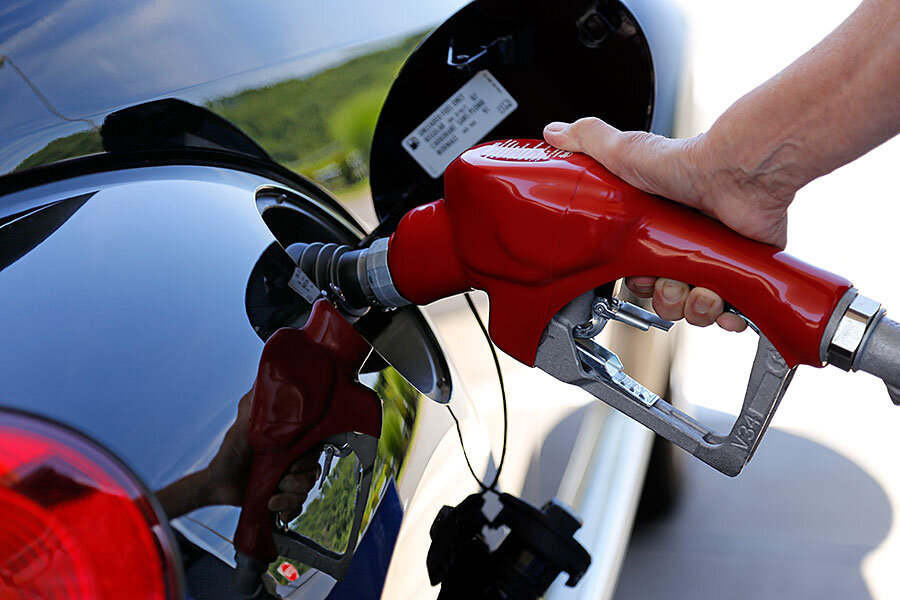Average fuel economy has improved only slightly in last century
Loading...
The past century has brought an onslaught of innovation. Don't believe it? Try to imagine modern life without television, the internet, microwaves, or social media.
But despite those and other technological advances, one thing hasn't changed too much: the distance that cars can travel on one gallon of gasoline.
To prove that point, Michael Sivak and Brandon Schoettle from the University of Michigan's Sustainable Worldwide Transportation program surveyed fuel economy figures from 1923 to 2015. Sad to say, the findings published in their new report, On-Road Fuel Economy of Vehicles in the United States: 1923-2015, are a little depressing.
In 1923, America's fleet of cars, trucks, buses, and vans earned an average of 14 miles to the gallon. As with other technologies, you might expect that figure would improve over time. Computers, for example, have improved at lighting speed: today's mobile phones have more processing power than the first manned rockets. Surely, fuel economy should improve at a similar rate, right?
Sadly, it hasn't. In fact, Sivak and Schoettle show that 1923 was something of a high-water mark for many years. Over the next half-century, average fuel economy actually fell, bottoming out at 11.9 miles per gallon in 1973.
Of course, we all know what happened then: the 1973 Oil Crisis, when fuel prices spiked, lines at gas stations wrapped around the block, and ultimately, newly elected president Jimmy Carter sat by a fire in a cardigan, encouraging Americans to support his push toward energy independence via renewables like solar power.
Within 20 years, average fuel economy had regained a fair bit of ground, hitting 16.9 miles per gallon in 1991.
Since then, though, improvement efforts have stalled. Over the next 24 years, the average fuel economy of vehicles registered in America rose just one mile per gallon--yes, one--hitting 17.9 in 2015, when Sivak and Schoettle's study ended.
So, what's the problem?
Sivak and Schoettle's work is to present baseline, quantifiable data. Their aim is solely to share fuel economy stats, not theorize about why those stats might move in one way or the other.
However, the duo do include a couple of hints about the factors at work--factors that can, at a minimum, help us interpret the data, if not fully understand why it is the way it is.
For example, they note that during the 50-year period from 1923 to 1973, much automotive technology did improve. At that time, however, car companies were focused on making vehicles faster and more powerful, not on making them more fuel efficient.
The fall of 1973 was a very rude awakening. Because America sided with Israel during the Arab-Israeli War (aka the Yom Kippur War, aka the Ramadan War), the Organization of Arab Petroleum Exporting Countries initiated a five-month embargo on crude-oil sales to the U.S. Fuel prices soared, and America launched a number of initiatives to avoid or minimize the effect of similar crises in the future.
Most notably, Congress passed Corporate Average Fuel Economy legislation, which set fleet-wide fuel economy benchmarks for automakers. That caused car companies to focus on making vehicles more efficient, which, in turn, led to the glut of small cars we saw in the mid-1970s and more than a few awful diesels.
But what CAFE also did was distinguish between light-duty vehicles like the cars many of us drive every day and heavy-duty vehicles like buses, delivery vans, and the like. As a result, there's more pressure for car-makers to improve their efficiency stats than there is for manufacturers of larger vehicles.
That's borne out in the stats above. In the graph, you can see that while truck stats have remained flat since the early 1990s, cars have seen fairly significant improvements in fuel economy since 1973. Whether that trend will continue under the Trump administration remains to be seen.
You can find a PDF of Sivak and Schoettle's abstract here.
This story originally appeared on The Car Connection.







